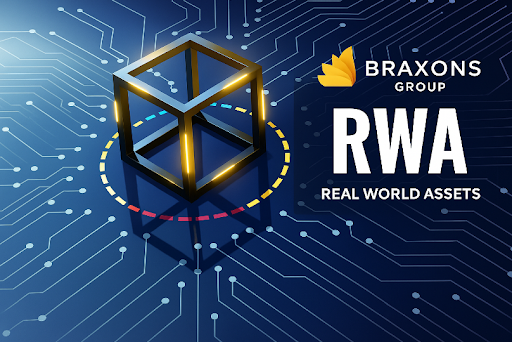Braxons Group: Liquidity Protocols for RWA and Yield Strategies — Bridging Real Assets with DeFi

The DeFi market is entering a new stage of growth through the integration of Real World Assets (RWA) into the blockchain ecosystem. Bonds, real estate, commodities, and even accounts receivable can now exist in tokenized form, enabling their use in automated smart contracts to generate stable income.
Liquidity protocols for RWA are becoming a crucial link between traditional finance and decentralized platforms. They create the foundation for stable yield strategies based on real-world economics rather than purely speculative cryptocurrency movements.
What Are RWA Liquidity Protocols?
These are DeFi platforms that work with tokenized versions of real-world assets, using them as collateral or as direct yield-generating instruments.
Their primary goals are to:
- Provide predictable returns to users;
- Reduce exposure to the volatility of cryptocurrencies;
- Enable participation in the global economy without intermediaries.
How They Work
- Asset Tokenization — converting RWAs (e.g., bonds or real estate) into digital tokens with legal protection via SPVs (Special Purpose Vehicles).
- Liquidity Pool Creation — users deposit stablecoins or cryptocurrencies, which are then used to acquire tokenized assets.
- Yield Strategies — income comes from bond interest, rental payments, commodity contracts, or business loans.
- Smart Contracts — automate pool management, profit distribution, and transaction auditing.
How Braxons Group Generates Returns for Investors
Our company applies a multi-layer liquidity management strategy that combines:
- Investments in tokenized government and corporate bonds with fixed yields;
- Participation in lending pools financing small and medium-sized businesses;
- Automated capital reallocation across pools with varying returns to minimize risk;
- Use of decentralized secondary markets to buy and sell RWA tokens at advantageous discounts;
- Deployment of predictive analytics models to forecast yield and protect investor capital.
This approach enables Braxons Group to deliver a consistent cash flow regardless of crypto market volatility.
Examples of RWA Protocols in the Market
- Centrifuge — tokenization of invoices, integrated with MakerDAO.
- Maple Finance — institutional lending using tokenized debt obligations.
- Goldfinch — unsecured lending to real-world businesses in emerging markets.
- Ondo Finance — yield pools backed by U.S. Treasuries.
Prospects and Challenges
Opportunities:
- Broader participation by banks and institutional funds;
- AI-powered optimization of investment strategies;
- Availability of RWA pools in multi-chain and Ethereum L2 environments;
- Creation of hybrid DeFi products, such as yield-bearing stablecoins backed by RWAs.
Risks:
- Regulatory uncertainty;
- Custodian reliability issues;
- Low liquidity on secondary markets;
- Potential vulnerabilities in smart contracts.
Conclusion
RWA liquidity protocols represent a step toward a new financial architecture, where blockchain becomes a fully functional channel for investing in the real economy. Braxons Group leverages this trend to build strategies that deliver predictable returns for investors while reducing risks through diversification.
In the coming years, RWAs are likely to become one of the primary growth drivers of DeFi 2.0, and companies capable of managing these assets efficiently will secure leadership positions in the global financial landscape.

https://charfen.co.uk/ A Complete Guide for Entrepreneurs and Business Growth

8 Benefits Of Implementing Sales And Commission Software For Business Growth

Unlocking Business Intelligence: Why Power BI Training is the Future of Data-Driven Success

Accelerating drug discovery through the DEL-ML-CS approach

AI in Marketing Is No Longer a Buzzword — It’s the Strategy

https://charfen.co.uk/ A Complete Guide for Entrepreneurs and Business Growth

8 Benefits Of Implementing Sales And Commission Software For Business Growth

Unlocking Business Intelligence: Why Power BI Training is the Future of Data-Driven Success








